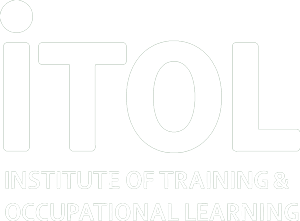Online Training vs In-Person Training: Which Is Most Effective? (Part 1)
Every year, more and more companies invest in online training and continued education for their employees. Predictions show that, by 2026, the online learning industry will reach a market value of $50 Billion, growing 15% per year.
“The Global Corporate E-Learning market accounted for $14.23 billion in 2017 and is expected to reach $49.87 billion by 2026, growing at a CAGR of 15% during the forecast period.” – BusinessWire.
This much investment must mean that online learning has some tangible benefits over traditional in-person training, right? Well, the truth is that there’s still much research left to do. Add to that the gradual change of in-person learning techniques, and it can become quite challenging to tell which option is the better choice for your business.
Is Online Learning New?
One of the biggest roadblocks to adopting online training and e-learning is this perception that it’s somehow the New Thing. Many decision-makers are sceptical of new trends, fearing that they’re just that: trends that will die-off before long.
With online learning, we can safely say that the point where it might die-off has long passed. E-learning was initially developed in the 90s; it has withstood the test of time for over two decades. The technologies powering it have changed and evolved, as have the techniques used to convey information.
However, the same is true with face to face in-person learning.
The reality is that many forms of in-person learning today are, actually, hybrid models in disguise; they may involve a significant portion of face to face in-person learning, but they also include online resources. Plus, the addition of video and screen sharing technologies – which have been broadly adopted due to the pandemic – means that online components are commonplace.
So, if you’re a decision-maker, business owner, HR representative, or another influential individual in your company, and you’re considering the decision of online versus in-person training programs, you likely want to know the pros and cons of each. Here are some initial thoughts.
Face to Face Learning Offers More Hands-On Experience
In-person learning allows you to interact with other learners and instructors in a physical setting. This provides opportunities to learn first hand through seeing and acting. Face-to-face interaction is essential for greater clarity and understanding than online training. Human contact is vital to enjoy hands-on learning.
Online Training Offers More Flexibility
Taking online classes enables you to be flexible with the timing of traditional physical learning. Individuals in remote locations or who have responsibilities can time their learning schedules when free with no distractions. You also have time to go over unfinished work without strain on resources or looking for time to travel to the instructor.
Face to Face Training Allows Learning to Take Place at the Same Pace
Physical learning makes it easy to keep track of your learning progress with others. There are many people in the same setting. You can interact with them closely and request clarifications easily and fast. You can get extra time to consult with the trainer where as It is common to lag behind others in an online learning setting.
Online Training can be Cost-Effective
Online training can help reduce training costs as it saves on various expenses you would need for physical learning. Some typical costs are:
- Transportation costs: You don’t need to travel anywhere to attend sessions with online learning, reducing thus reducing travel costs (petrol, fares etc.).
- Accommodation costs: With online learning there is usually no travel. You don’t need any hotel fees near the venue.
There are benefits and drawbacks to both in-person and online training. Your choice will depend on your situation, budget, course, and ease of learning with any option. However, one thing is for sure there has never been a better time to take on some training.
Certificate in Virtual Design & Delivery – ITOL Qualifications & Training

